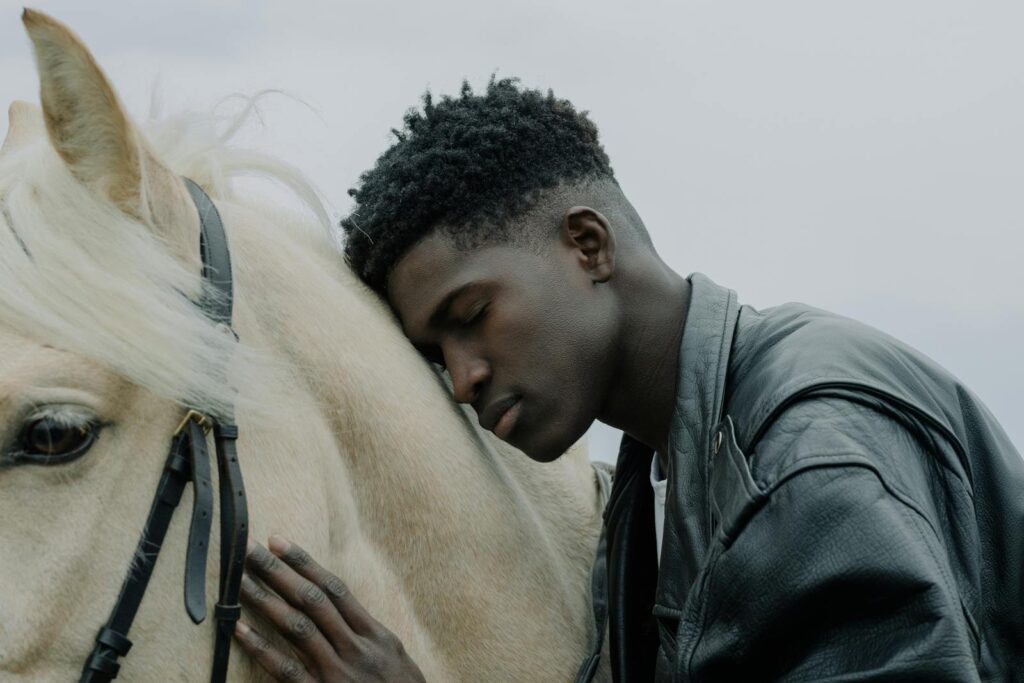The bond between humans and horses is built on trust, communication, and mutual respect. Yet even the most well-mannered horses can occasionally develop problematic behaviors like nipping or biting. These actions aren’t just annoying—they can be dangerous, leading to serious injury and straining the human-horse relationship. Understanding why horses bite is the first step in addressing the behavior constructively. Unlike punishment-based approaches that can erode trust, gentle correction techniques uphold the horse’s dignity while reinforcing clear boundaries. This article explores the root causes of biting and offers humane, effective strategies to correct the behavior—preserving the partnership that makes horsemanship so deeply rewarding.
Understanding Normal vs. Problematic Biting Behavior
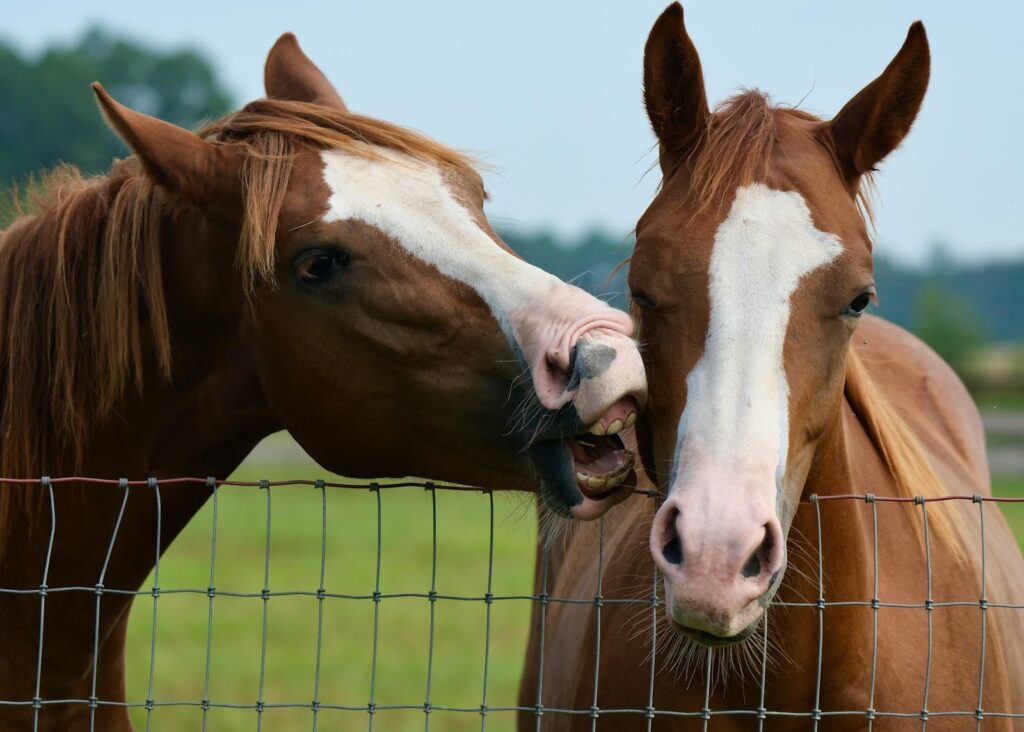
Horses are naturally oral animals, using their mouths to explore the world, much like humans use their hands. Mutual grooming, playful nipping, and exploratory mouthing are all normal behaviors, especially among horses living in social groups. However, there is a clear distinction between these natural interactions and truly aggressive or dangerous biting. Gentle, curious mouthing is part of healthy equine behavior, while problematic biting is marked by force, pinned ears, and sometimes a threatening posture. Recognizing this difference helps owners intervene early—before harmless habits escalate into dangerous behaviors that could lead to serious injury.
Playful Nipping in Young Horses
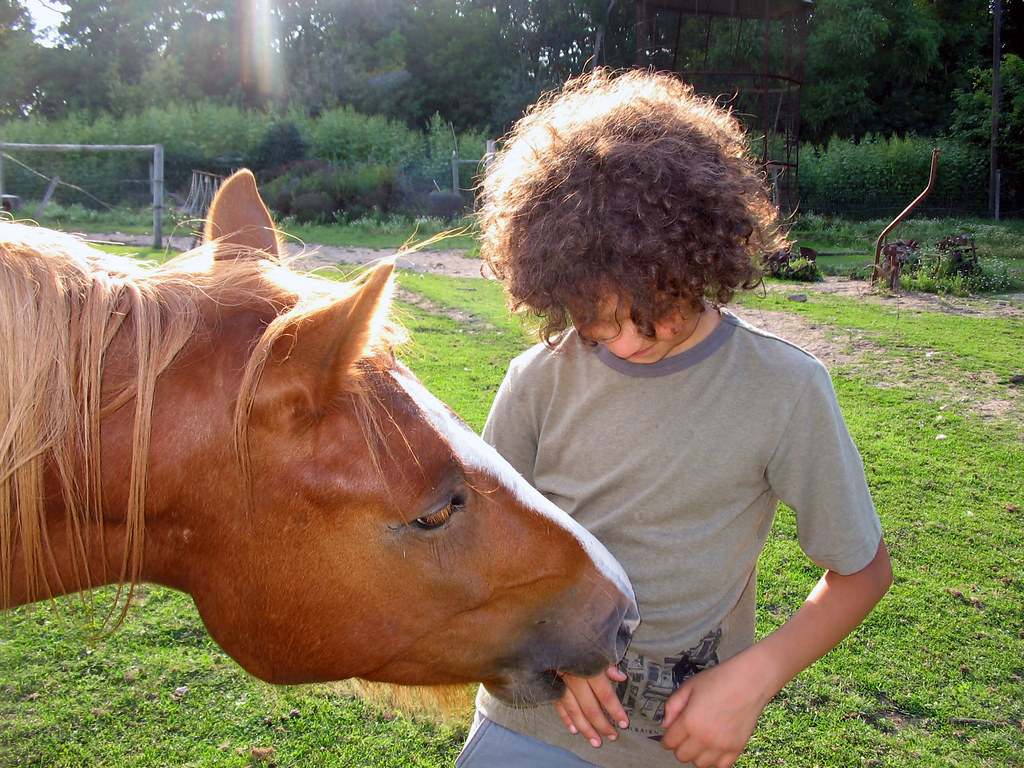
Foals and young horses naturally engage in mouthing behaviors as part of their development and play with other horses. This playful nipping helps establish social boundaries within the herd and is a key aspect of equine communication. If not taught proper limits early on, young horses may carry these behaviors into their interactions with humans. What may seem cute or harmless in a small foal can become dangerous as the horse matures and gains strength. Consistent handling from an early age teaches that nipping humans is never acceptable, even in play. Setting these boundaries during a horse’s formative years lays the groundwork for respectful behavior throughout their life.
Biting as a Response to Pain or Discomfort
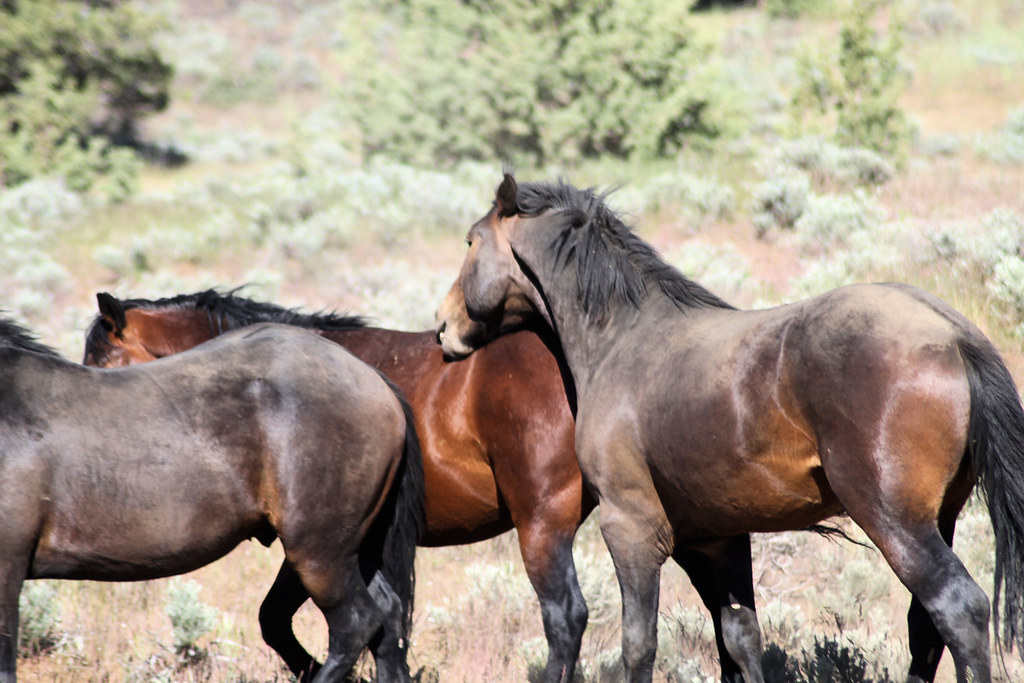
One of the most common yet overlooked causes of sudden biting behavior is physical pain or discomfort. Horses may bite in response to issues like poor saddle fit, dental problems, arthritis, or digestive upset—communicating the only way they can that something is wrong. A horse that suddenly begins nipping during saddling, for example, may be signaling back pain rather than acting out. Before assuming a horse is being “naughty,” a thorough veterinary exam should rule out any physical causes. Addressing the root issue often resolves the biting without additional training, underscoring the importance of listening to what horses express through their behavior.
Food-Related Aggression and Resource Guarding
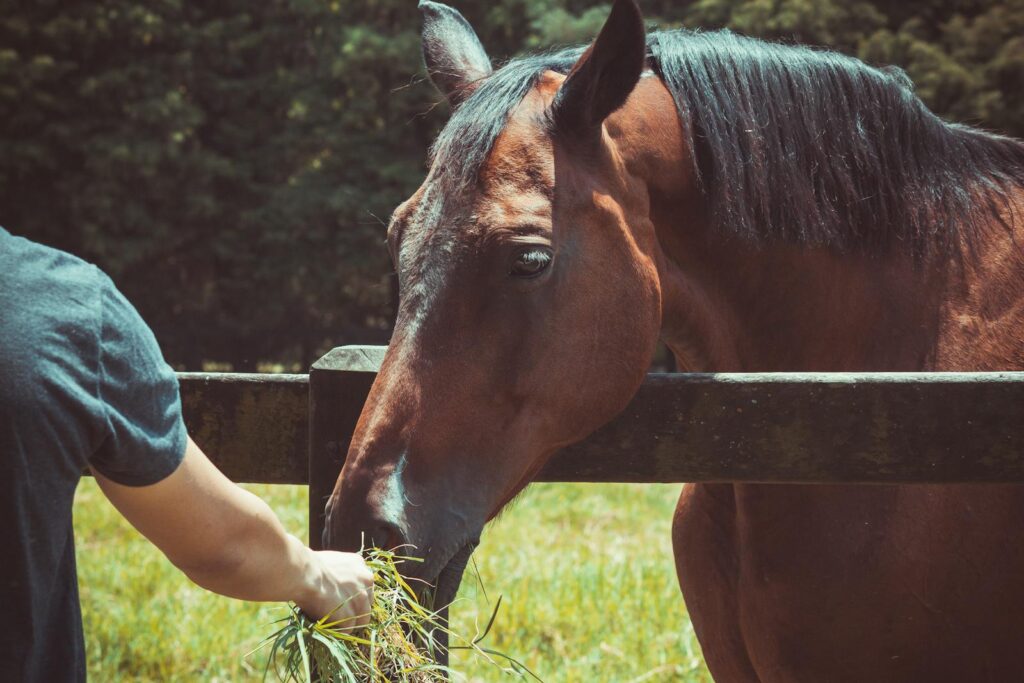
Food aggression is one of the most dangerous forms of biting behavior in horses. It often appears when horses become protective of their feed, treats, or personal space during mealtimes. A horse may pin its ears, snake its neck, and bite to warn humans or other horses away from what it perceives as its resources. This behavior commonly develops when horses compete for limited food or learn that aggression results in more access. Consistent feeding routines, adequate spacing between horses, and never rewarding pushy behavior with treats can help prevent resource guarding. For horses that have already developed this habit, structured retraining is essential, as food aggression can lead to serious injuries if left unchecked.
Dominance and Boundary Testing

Horses are hierarchical animals that naturally establish and maintain social order within their herds. When interacting with humans, some may test their place in the “human herd” through behaviors like nipping, biting, or pushing. This boundary testing is especially common during developmental stages, such as adolescence or when a horse encounters a new handler. A horse that successfully intimidates a handler by biting may learn that the behavior gains dominance or control. Consistent, calm handling that communicates boundaries—without escalating into confrontation—helps the horse understand their place without harming the relationship. Establishing yourself as a fair but consistent leader can prevent many dominance-related biting behaviors from developing.
Fear-Based Biting as Self-Protection

Fear is another significant trigger for biting behavior in horses, especially in those with traumatic histories or limited handling. A frightened horse may bite defensively when it feels cornered, trapped, or threatened, seeing the behavior as a necessary means of self-preservation. The body language of a fear-biter differs from that of a dominant horse, typically including wide eyes, tense muscles, and a posture ready for flight if possible. These cases require extreme patience, as punishing fear-based behavior only reinforces the horse’s belief that humans are threatening. Systematic desensitization, approach-and-retreat techniques, and gradually building positive associations with handling can help fearful horses learn that humans are safe. Gaining trust may take time, but the transformation is often remarkable when a horse realizes it no longer needs to bite in self-defense.
The Problem with Punishment-Based Corrections

Traditional responses to biting often involve harsh corrections, such as hitting the horse or “biting back” by pinching its nose. While these punishment-based methods may temporarily suppress the behavior, they rarely address the underlying cause and often create additional problems. Harsh corrections can damage the trust between horse and handler, increasing fear or anxiety that may lead to other behavioral issues. Physical punishment can also escalate the situation if the horse reacts defensively, turning a simple nipping problem into a dangerous confrontation. Additionally, punishment fails to teach the horse what behavior is desired instead. Effective training focuses on redirecting unwanted actions and reinforcing appropriate responses, building a partnership rooted in communication rather than intimidation.
Setting Clear, Consistent Boundaries
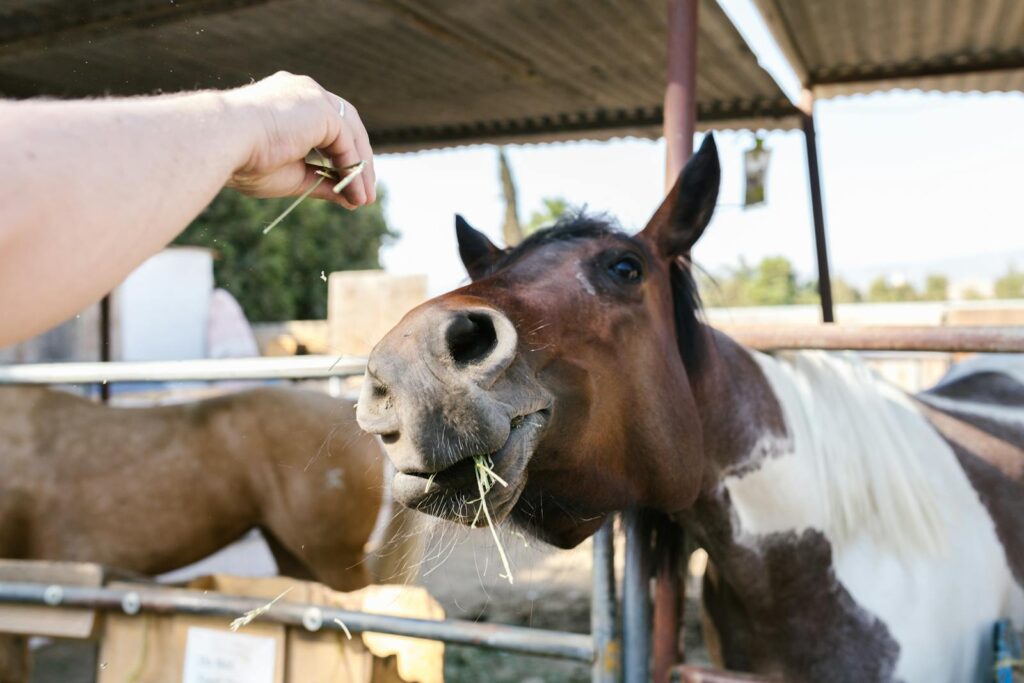
Successful prevention of biting behavior begins with setting clear, consistent boundaries in every interaction. Horses thrive on predictability and learn best when expectations remain the same, regardless of the situation or handler. Inconsistencies—such as allowing playful nipping during grooming but punishing it during saddling—create confusion and undermine training. All handlers working with a particular horse should follow the same guidelines to avoid sending mixed messages. Boundaries should be enforced calmly and firmly, without anger or excessive force that could harm the relationship. When horses clearly understand what’s expected of them, they feel more secure and are less likely to test limits through nipping or biting.
Redirect and Reward: Positive Reinforcement Techniques

Positive reinforcement is one of the most effective ways to address biting behavior without damaging the horse-human relationship. This approach emphasizes rewarding desired behaviors rather than punishing undesired ones, fostering positive associations with appropriate interactions. When a horse attempts to nip, immediately redirect its focus to an acceptable behavior, such as backing up or moving its head away, and reward this response. The timing of the reward is crucial—it must occur immediately after the desired behavior for the horse to make the connection. By consistently applying this technique, horses learn that polite behavior leads to rewards, while nipping results in no reinforcement. Over time, horses naturally choose behaviors that bring rewards, gradually replacing biting with more acceptable interactions.
Addressing Underlying Causes Through Training
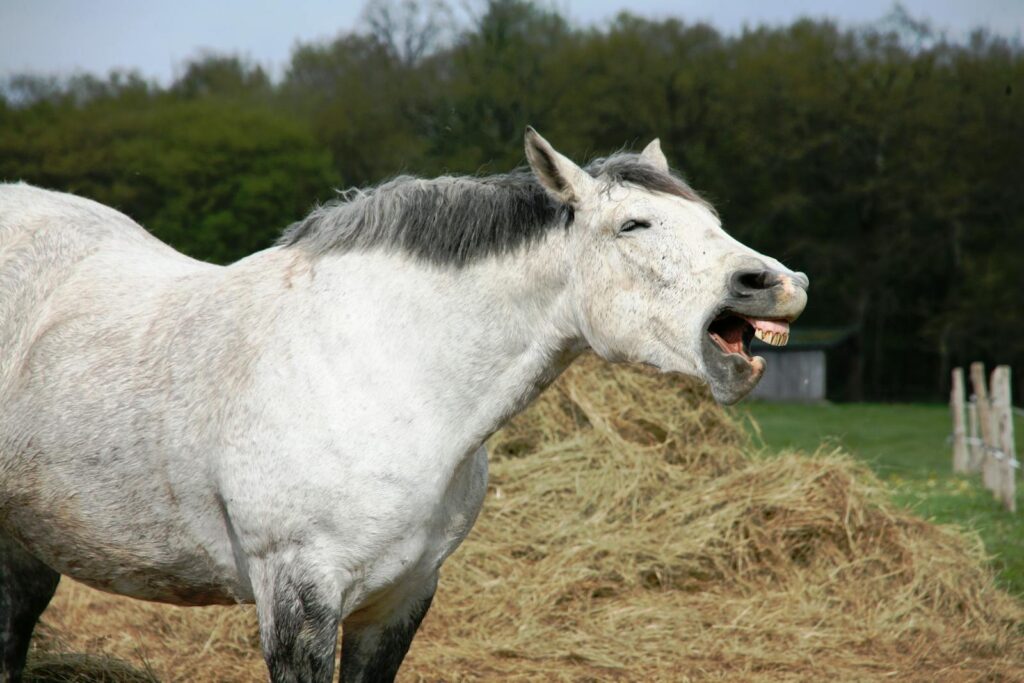
Effective long-term resolution of biting behaviors requires addressing their root causes, rather than simply suppressing the symptoms. For dominance-related biting, this may involve groundwork exercises that reinforce the handler’s leadership role without confrontation. Horses that bite due to anxiety might benefit from systematic desensitization to trigger situations, gradually building confidence in previously fear-inducing scenarios. Food-aggressive horses require structured protocols that teach patience and appropriate behavior around food. The training approach should be tailored to each horse’s specific needs and the underlying motivations for biting. By addressing the root causes, the biting behavior becomes unnecessary from the horse’s perspective, fostering lasting behavior change instead of temporary compliance.
Management Strategies to Prevent Biting

Environmental and management factors play a significant role in a horse’s behavior, including tendencies to bite. Ensuring adequate turnout time helps reduce frustration and excess energy that may manifest as nipping or biting. Proper socialization with other horses encourages natural herd behaviors and allows young horses to learn appropriate boundaries through interaction with experienced equine “teachers.” Consistent feeding schedules help prevent the anxiety and anticipation that can trigger food-related aggression. Environmental enrichment—providing opportunities for natural foraging and mental stimulation—can reduce boredom-related behavioral issues. Even simple management changes, like avoiding unnecessary confinement or removing triggers for resource guarding, can significantly reduce biting incidents without requiring intensive training interventions.
When to Seek Professional Help
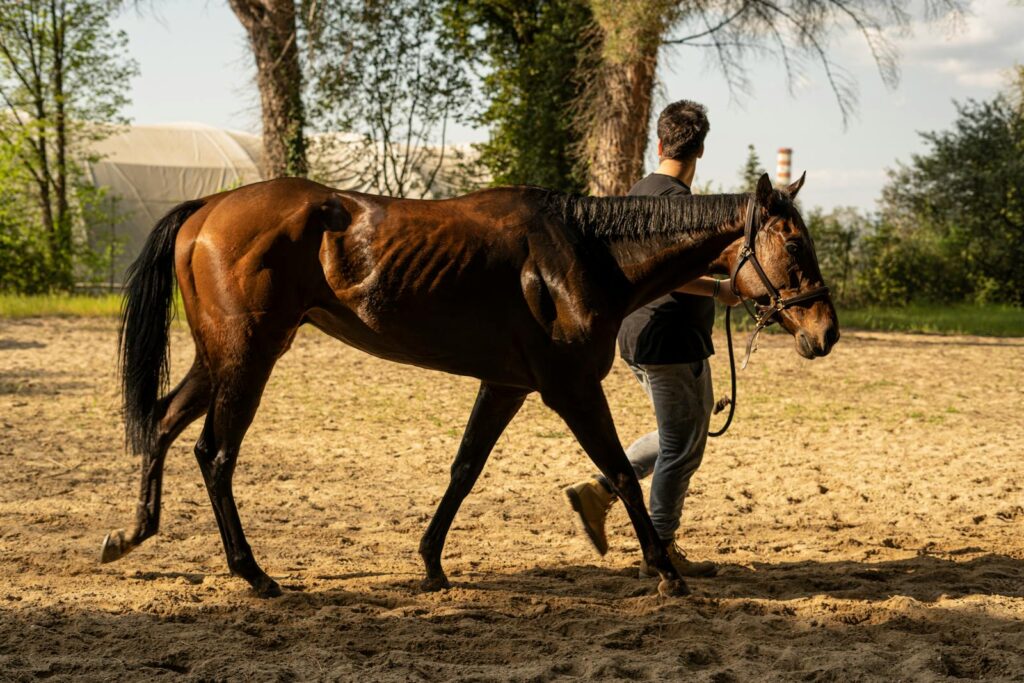
While many biting behaviors can be managed through consistent handling and basic training, certain situations call for professional intervention. Severe biting that poses a safety risk, persists despite proper training efforts, or lacks a clear cause may require the expertise of a professional trainer or equine behaviorist. These specialists offer valuable insight and objective evaluation, often identifying subtle issues that owners may overlook. They can design targeted training plans tailored to the horse’s specific needs. When choosing a professional, prioritize those who understand equine behavior and use primarily positive, horse-friendly methods rather than dominance-based or punitive approaches. With the right support, even serious biting issues can become opportunities for growth—for both horse and handler.
Maintaining Progress and Preventing Relapse
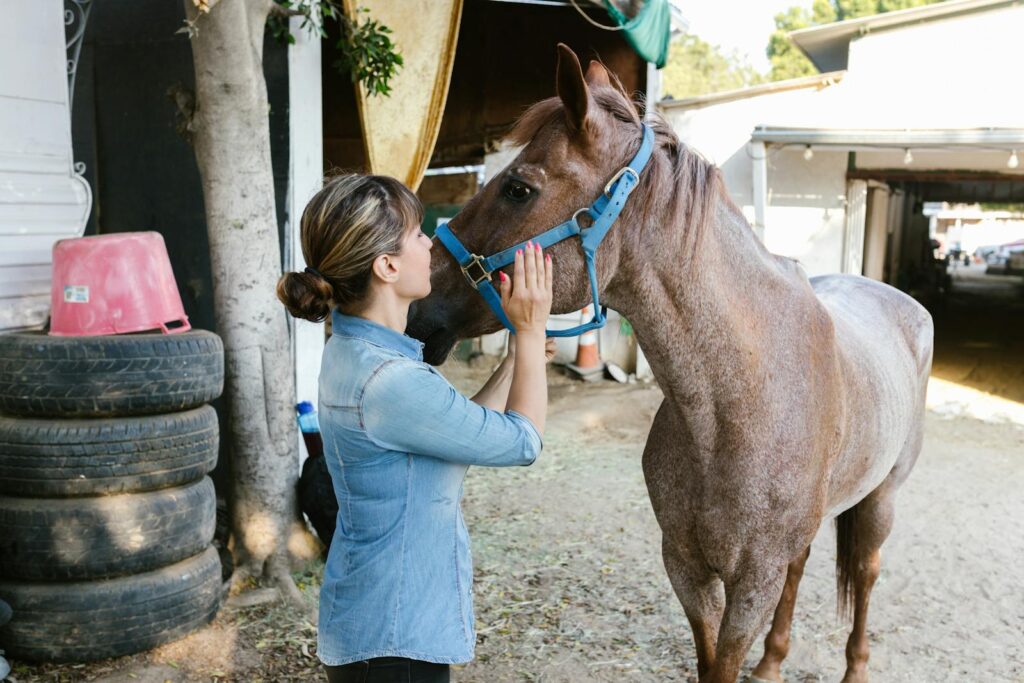
Successfully addressing biting behavior is not a one-time fix but an ongoing process that requires continued attention. Even after improvement, consistency is key to preventing regression. Periodic refresher sessions help reinforce boundaries and expectations, especially during times of change or stress when old behaviors may resurface. Handlers should stay alert for early warning signs—such as ear-pinning or head-swinging—that often precede biting, intervening before the behavior escalates. Consistent management practices, including sufficient turnout, balanced nutrition, regular veterinary care, and mental stimulation, support long-term behavioral stability. It’s important to recognize that progress isn’t always linear; temporary setbacks are normal and don’t mean the approach has failed. With patience and persistence, lasting positive change is achievable.
Understanding and gently correcting biting behavior is essential to building a safe, trusting partnership with horses. Instead of seeing biting as mere misbehavior that warrants punishment, recognizing it as a form of communication—often signaling discomfort, unmet needs, or confusion—leads to more compassionate and effective solutions. By identifying root causes, setting clear boundaries, applying positive reinforcement, and maintaining consistent handling, most biting behaviors can be resolved without damaging the horse-human bond. This thoughtful approach not only ensures safer interactions but also strengthens the relationship, fostering mutual respect rather than fear or dominance. While it may take time and patience, addressing biting with empathy leads to more lasting results and preserves the harmony that makes horsemanship truly meaningful.

